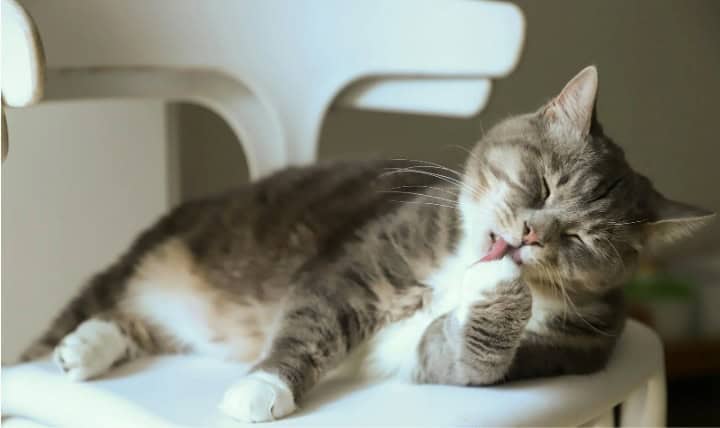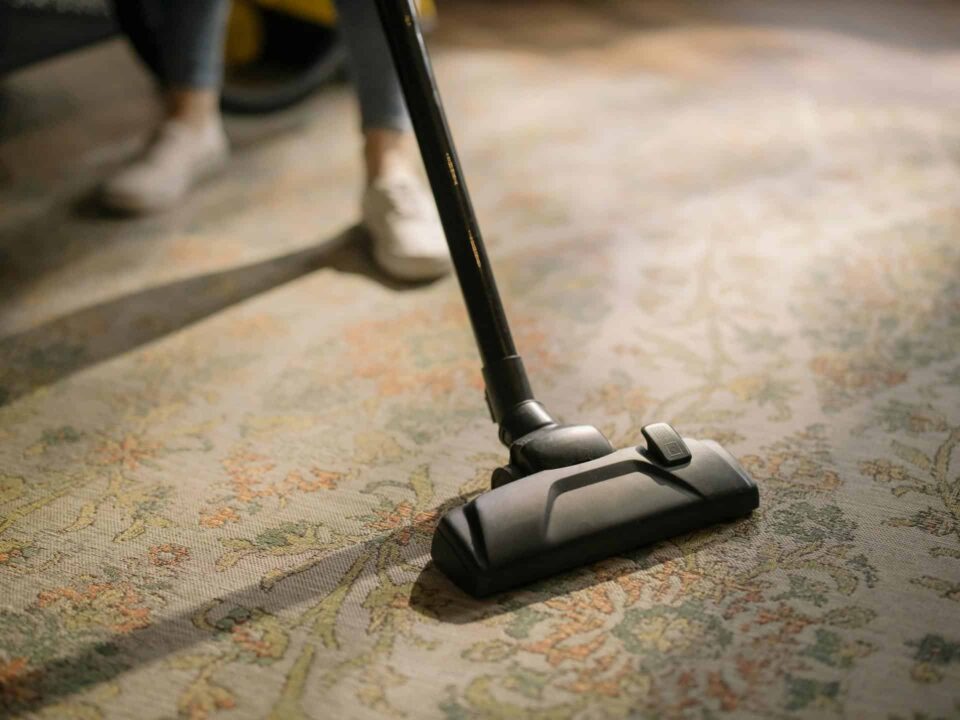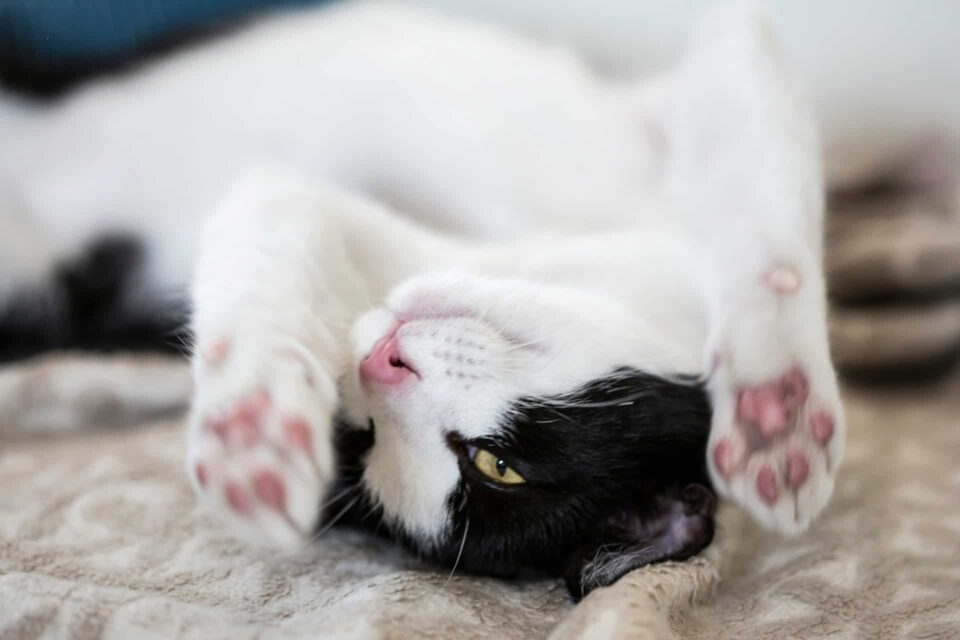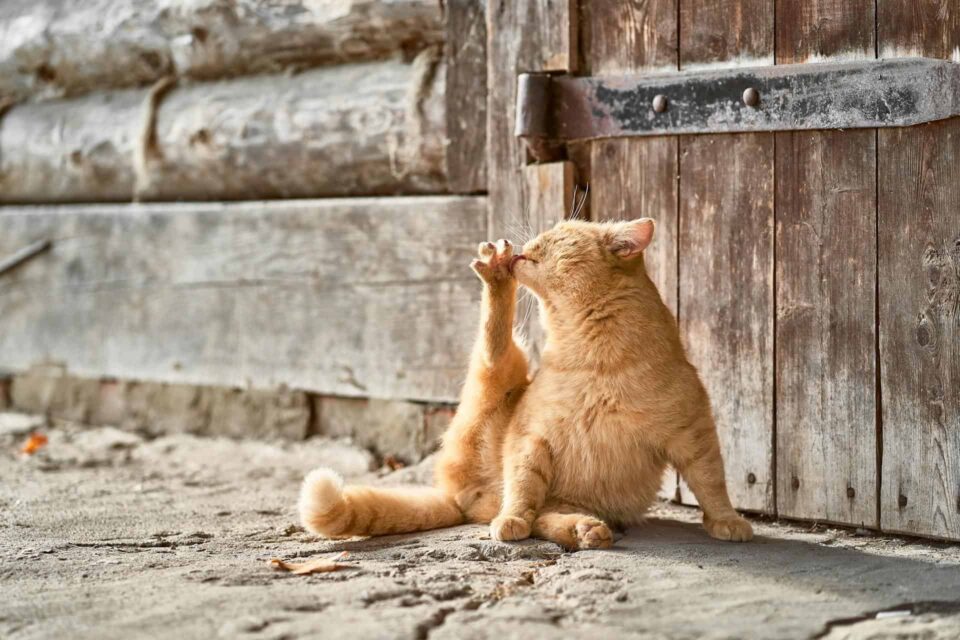
How to Get Rid of Fleas on Cats
Fleas are a common nuisance for cats and their owners, but with the right knowledge and tools, an infestation can be effectively managed and prevented. This article compiles expert advice from veterinarians on how to identify, treat, and prevent flea infestations in cats, ensuring your furry friend stays happy and healthy. We cover everything from recognizing the signs of fleas to selecting the best treatments and maintaining a flea-free environment at home.
Key Takeaways
- Effective flea management includes both treating the active infestation on your cat and taking steps to eliminate fleas from your home environment.
- Always consult with a veterinarian to choose the safest and most appropriate flea treatment for your cat, and never use dog-specific flea products on cats.
- Regular home maintenance, such as vacuuming and washing pet bedding in hot water, is essential for preventing future flea infestations.
Identifying and Treating Fleas on Cats
Does My Cat Have Fleas?
Determining whether your cat has fleas is the first step in ensuring their comfort and health. Look for the telltale signs of flea activity, such as the presence of flea dirt, which appears as tiny black specks on your cat's skin or bedding. To test if these specks are flea dirt, place them on a damp paper towel; a reddish-brown stain indicates flea feces.
Another indication involves spotting live fleas, which you can identify by combing through your cat's fur with a flea comb. Furthermore, signs like agitation, restlessness, or excessive grooming may suggest a flea problem. It's essential to address itchy skin, reduce stress in cats, and prevent compulsive licking for their well-being. While regular grooming is necessary, excessive grooming may signal underlying concerns that need addressing.
Here are steps to check for fleas on your cat:
- Use a flea comb to sift through your cat's coat.
- Part the hair to examine the skin closely.
- Look for live or dead fleas and flea dirt.
- Observe your cat's behavior for signs of discomfort or excessive grooming.
The Flea Life Cycle
Understanding the flea life cycle is crucial in effectively combating these pests. Fleas go through four main stages: egg, larva, pupa, and adult. Initially, adult fleas lay eggs on your cat, which can fall off and spread throughout your home. These eggs hatch into larvae, which feed on organic material, including pre-digested blood from adult fleas.
The larvae then develop into pupae by spinning cocoons around themselves. This stage is particularly tough to tackle as pupae can remain dormant for extended periods, waiting for optimal conditions to emerge as adult fleas. Adult fleas are the ones you're likely to notice on your cat, but they represent only a small fraction of the total flea population present.
To effectively break the flea life cycle, you must target each stage. This involves not only treating your cat but also addressing potential flea habitats in your home. Regular use of flea control products is essential, as the life cycle can vary from a few weeks to several months, depending on environmental conditions.
Treating Fleas on Cats
Once you've confirmed that your cat is indeed battling fleas, it's time to take action. Start by gathering all the necessary supplies for the treatment process. You'll need a flea comb, rubbing alcohol, flea shampoo (or a gentler option if your cat's skin is irritated), and a flea and tick prevention treatment. Additionally, consider getting flea-killing sprays or foggers for your home and insecticide spray for your yard.
Employing the flea comb, thoroughly comb through your cat's fur, giving extra attention to areas like the neck and tail, where fleas tend to cluster. Dispose of the fleas by immersing them in hot, soapy water. If your cat's skin is not too sensitive, you can bathe them with flea shampoo to help alleviate the infestation. After the bath, apply a vet-recommended flea and tick prevention treatment to keep future infestations at bay.
Remember, if you have multiple pets, it's crucial to treat each one. Fleas can easily hop from one animal to another, so leaving even one pet untreated can undermine your efforts. Follow these steps for each animal to ensure a flea-free environment.
Choosing the Right Flea Treatment
Once you've tackled the immediate flea problem on your cat, it's crucial to choose an ongoing treatment to prevent re-infestation. Consult with your veterinarian to find the most effective and safe options tailored to your cat's specific needs. Prescription treatments, such as spot-on and oral medications, are often recommended over over-the-counter options for their targeted effectiveness and safety profile.
When selecting a flea treatment, consider the following:
- The age, weight, and health status of your cat.
- The presence of other pets in the home.
- The specific parasites you need to protect against.
Related: Essential Oils Safe for Cats: A Comprehensive Guide
Preventing and Eliminating Fleas from Your Home
How to Get Rid of Fleas on Your Cat
Upon discovering fleas on your beloved feline, it's crucial to address the issue promptly. Begin by meticulously combing through your cat's fur using a flea comb, focusing on areas like the neck and tail where fleas tend to gather. After each combing session, immerse the comb in hot, soapy water to eliminate any captured fleas.
Next, consider a how-to-get-rid-of-fleas-on-cats treatment plan that includes specialized shampoos or topical medications. These products are designed to kill fleas on contact and provide ongoing protection. Always follow the instructions carefully and consult with your veterinarian to choose the safest and most effective option for your pet.
To ensure a flea-free environment for your cat, take these additional steps:
- Vacuum your home frequently, especially in areas where your cat spends a lot of time.
- Wash your cat's bedding and any soft furnishings in hot water to eliminate any lingering fleas or eggs.
- Consider professional pest control services if the infestation is severe or persistent.
Remember, the key to successful flea eradication is consistency and thoroughness. By following these steps, you can restore your cat's comfort and prevent future infestations.
Flea Prevention for Cats
Maintaining a flea-free cat involves consistent use of prevention methods. Year-round flea preventative treatments are crucial, whether you opt for topical applications or oral medications. These treatments are designed to suit the various needs of your feline friends and other household pets.
Regularly use a flea comb to check your cat's coat for early signs of flea activity. If fleas are detected, promptly apply the discussed treatment strategies. Consult your veterinarian to choose the most effective flea prevention method tailored to your cat's needs.
Consistency is key in preventing flea infestations. Administer the flea prevention product on a regular schedule throughout the year, adhering to the product's instructions and your vet's guidance. Skipping doses can leave your cat vulnerable to fleas. Remember, an ounce of prevention is worth a pound of cure when it comes to keeping fleas at bay.
Related: Your Guide to Perfecting Your Pet's Skincare Routine

How to Get Rid of Fleas in Your Home
Once you've addressed the flea problem on your cat, it's crucial to tackle the infestation within your home to prevent a reinfestation. Start by thoroughly vacuuming carpets, rugs, and furniture, especially in areas where your pet spends a lot of time. Steam cleaning your carpets can also be highly effective in eliminating fleas at all life stages.
Then, launder all bedding, including your pet's, in hot, soapy water to eliminate any fleas or eggs. Routinely vacuum hard surfaces, particularly focusing on spots near food bowls, litter boxes, and pet beds. If needed, apply a flea spray to treat these areas after vacuuming.
For outdoor areas, consider treating your yard with a flea spray or hiring a professional pest management company. Remember, consistency is key to keeping your home flea-free. For a comprehensive approach, follow these steps:
- Vacuum regularly and thoroughly
- Wash bedding in hot water
- Treat your home and yard with appropriate flea control products
By following these steps, you can ensure that your home remains a comfortable and flea-free environment for both you and your feline friend.

Natural Remedies and Precautions
When exploring natural remedies for flea control, it's essential to proceed with caution. Natural treatments often include essential oils, which, while popular, are not as effective as traditional insecticide-based products. More importantly, they can be harmful to your cat if not used correctly. Here are some steps to ensure the safety and well-being of your feline friend:
- Always consult with your veterinarian before trying any home remedies or natural solutions.
- Be aware that some commonly suggested remedies, such as lemon or apple cider vinegar, may only offer temporary relief and could potentially irritate your cat's skin.
- If you choose to use natural products, select those specifically designed for cats and follow the instructions meticulously to avoid adverse reactions.
Remember, while the idea of using natural flea treatments can be appealing, their efficacy is often questioned by experts. If you're considering such options, prioritize your pet's health and consult with professionals to find the safest and most effective solutions.
Fleas can be a nuisance for your beloved pets and a headache for homeowners. But worry not, Gou Gou Pets™ offers a holistic approach to preventing and eliminating fleas from your home, ensuring your pets' comfort and well-being. Our products are formulated with natural ingredients, embracing the power of holistic health to provide relief and protection. Don't let fleas disrupt your pet's happiness—contact us today to explore our range of pet care solutions and take advantage of our exclusive offers, such as free shipping on orders over $49 and a 10% discount on your first purchase when you sign up for our email. Act now and join the Gou Gou Pets™ family for a flea-free, healthy home!
Navigating Flea Infestation: Strategies for a Pest-Free Cat
Tackling a flea infestation on your cat requires a comprehensive approach that includes identifying the presence of fleas, understanding their life cycle, and implementing both treatment and prevention strategies. By following the expert tips we've shared, such as using flea combs, washing bedding in hot water, and choosing the right flea treatment products, you can effectively rid your feline friend of these pesky parasites. Remember, it's crucial to consult with your veterinarian to select the safest and most effective treatment options for your cat, and to ensure that your home environment is also treated to prevent re-infestation. With diligence and the right knowledge, you can keep your cat flea-free and comfortable.
Related: Natural Pain Relief for Cats: Holistic Approaches for Comfort
Share

